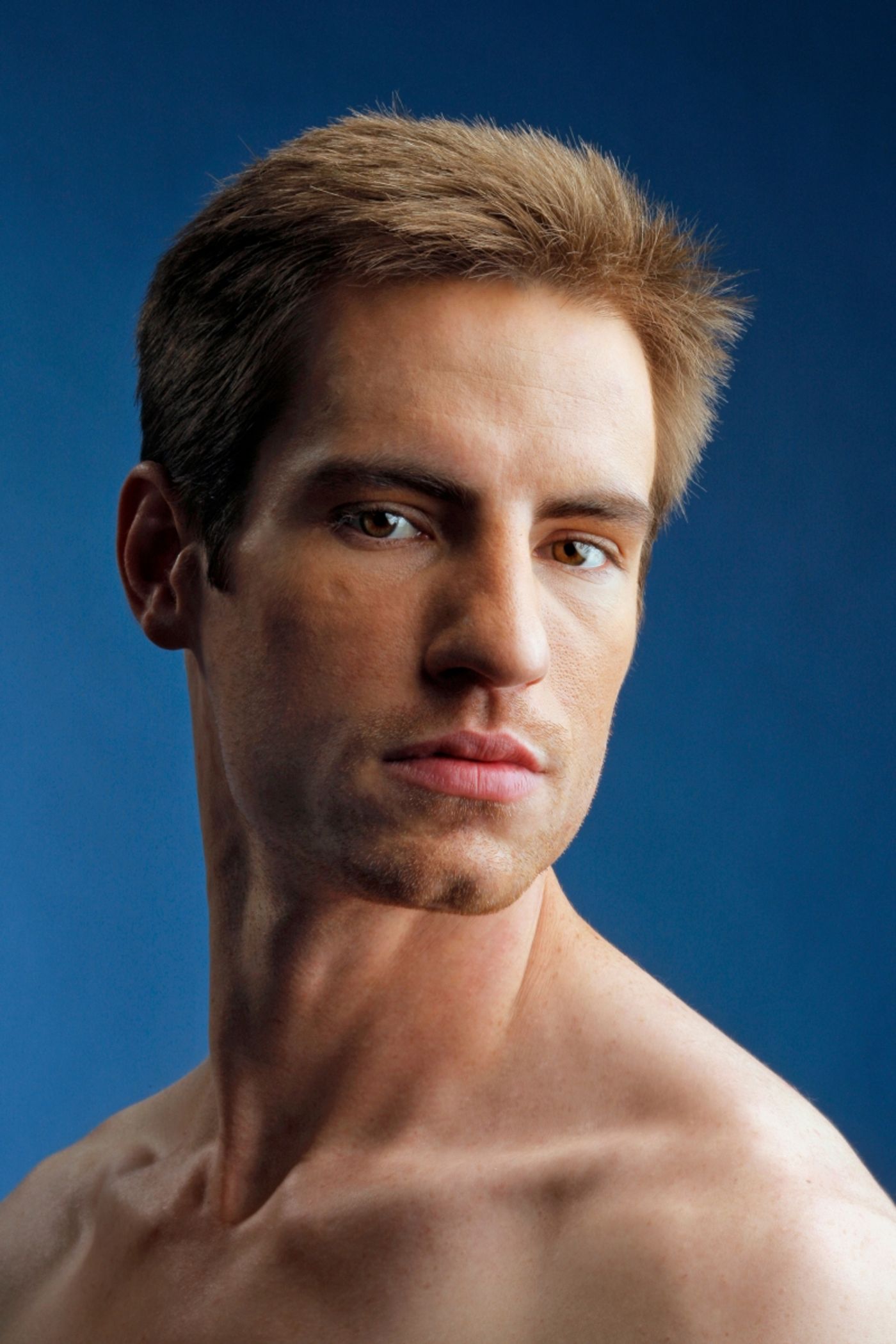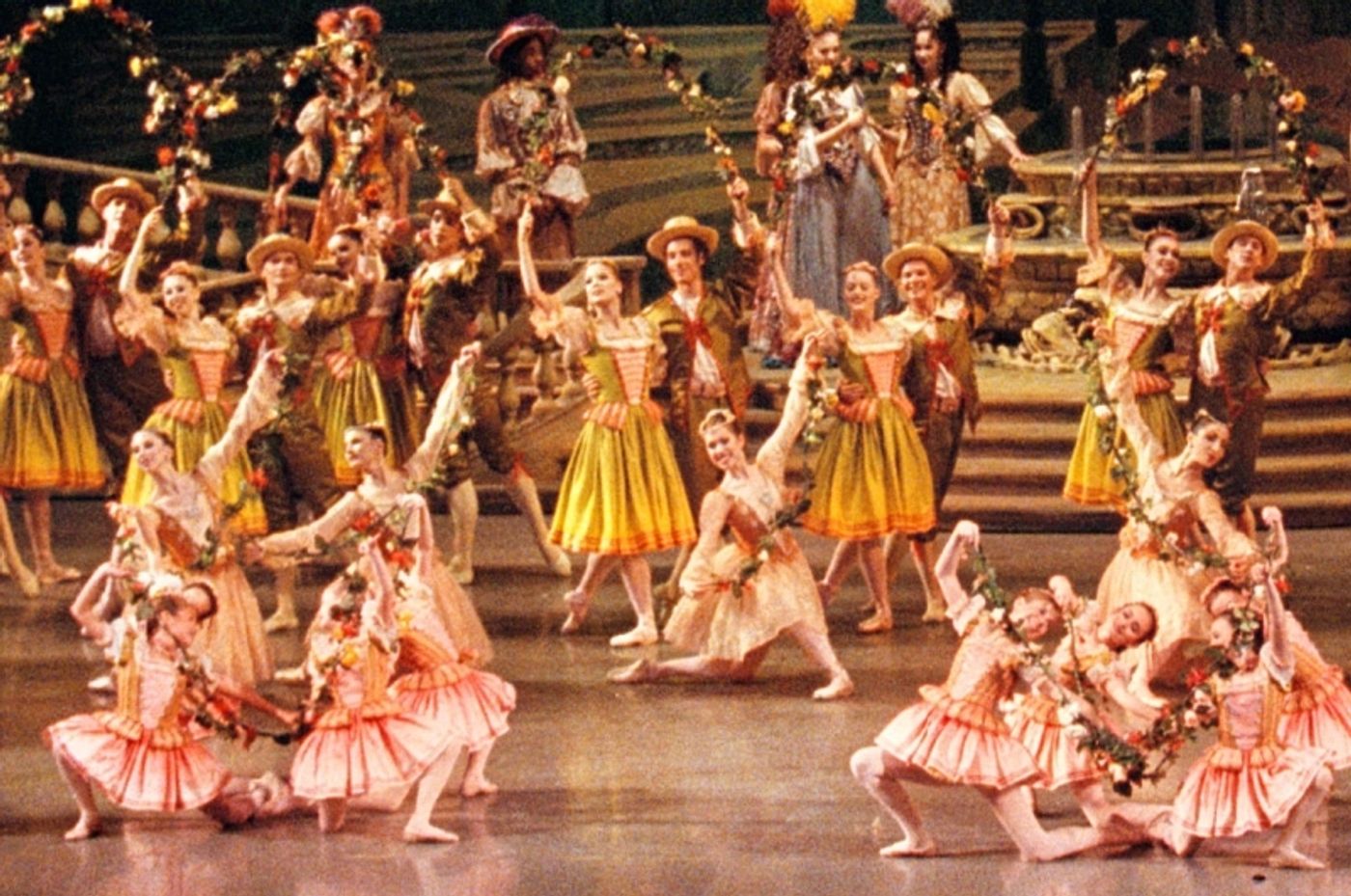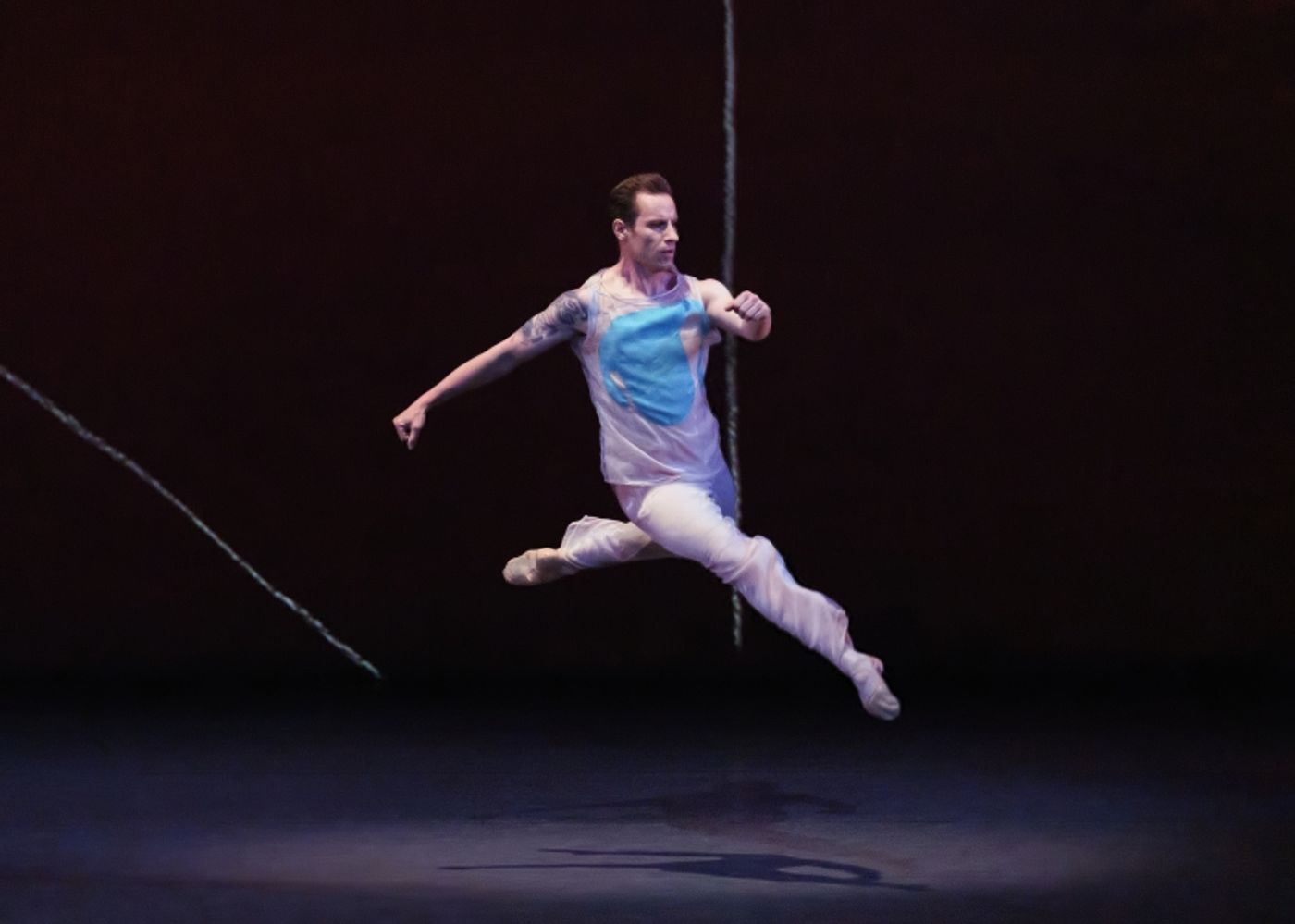Interview: Theatre Life with Andrew Veyette
The veteran dancer on his long association with New York City Ballet and more.

Today’s subject Andrew Veyette is currently living his theatre life as the longest running dancer with New York City Ballet. The company begins a two-program week-long engagement at Kennedy Center this evening that continues through June 11th in the Opera House.
In the spring of 2000, Andrew became an apprentice with New York City Ballet, and later that season he joined the Company as a member of the corps de ballet.
In March of 2006 he was promoted to soloist. In May 2007 he was promoted to principal dancer.
Think about this for a second. Andrew has been with the same company for 23 years. That is becoming more and more uncommon these days for people working in the arts.
He has worked under the great Peter Martins and danced some of the company’s most famous works.
Andrew Veyette is living his theatre life to the absolute fullest and does so with a passion and drive that should be inspiring to any up-and-coming dancer and artist in general.
Grab some tickets to see Andrew and the world-famous New York City Ballet this week at Kennedy Center.
At what age did you get interested in ballet?
Right around ten years old. My older brother was already in tap and jazz – he wanted to be Gene Kelly -- and the teacher said, Well, we need boys in ballet -- if you do ballet, then we won't make you pay for any of it. I went with my mom to pick him up from ballet one day and it just looked like fun. I was also doing gymnastics, and I would say around twelve, I made the choice that ballet was what I was going do.
Where did you receive your training?
This was in Visalia, California, an hour south of Fresno, at a school called Dance Arts. Betty Downs was a very, very sweet lady and the school was all about just really loving and enjoying dance. And then, when I was eleven or twelve, we ended up getting involved with a bigger school, Westside Ballet School in Santa Monica. Our school wasn’t big enough to do a whole Nutcracker, so we did the party scene – my brother did the Prince and I was Fritz -- and Westside did all the dancing in the second act. Later on, our older brother Michael started dancing too. So on Saturdays, my mom would get up with us at 3:00 or 4:00 in the morning and we'd load up in the minivan and drive the three-and-a-half, four hours down to Santa Monica for class, partnering class, and rehearsals for Nutcracker, and then drive back up the same day. We did that for two years.
And then I came to the School of American Ballet [NYCB’s official school] for the summer program in 1996, 97, and 98, and then stayed for the full year beginning in 1998. I’m a little embarrassed to say this, and I don’t remember purposefully keeping it, but a couple of years ago I found my rejection letter from the first summer that I auditioned [for the SAB summer program] and didn’t get in.
Of all the fine dance companies all over the world you could have chosen to dance with, what made New York City Ballet your choice for it being your artistic home?
When I was a kid, the only way to see ballet was to go to the public library and borrow video tapes. Most of what you could get a hold of was the Kirov or the Bolshoi. And then in 1993, the Balanchine Celebration aired [on PBS] -- I didn't know anything about New York City Ballet, but I saw Agon, and Stars and Stripes, and Union Jack, and Western Symphony. It was like, oh my God, I want to do that someday.
Before we started going to Westside, my school was closed on the weekends, but our teacher knew that me and my brothers were very motivated, so she would give us the keys to the studio. I would take the videotape that we recorded off the TV to the school on Saturdays and I taught myself Stars and Stripes when I was 11 years old.
One of the first things I ever saw live was Damien Woetzel in Donizetti Variations. It was when I came to the summer program at SAB, and it was just incredible. And Nikolaj Hübbe did La Sonnambula -- the whole thing was just mind blowing. I was like, This is it. They were the best dancers in the world to me.
Can you please tell us how you found out that you were being asked to join New York City Ballet?
At the end of Special Men’s Class one day at SAB, [former NYCB Principal Dancer and SAB teacher] Peter Boal looked over at me and two other dancers and was like, You three, my office, right now. We thought we were in so much trouble. And he sat us all down and he's like, very deadpan, I just don't even know what to say to you three. You’re always late, you’re never in dress code…and you're all starting tomorrow with the company. [Laughs] And within less than a month of becoming an apprentice, I replaced another dancer in a new ballet, Harmonielehre by Peter Martins. I think he was impressed that I could handle it, and they gave me my corps de ballet contract right before the first show.

Peter Martins' The Sleeping Beauty.
Photo by Paul Kolnik.
What was the first piece you ever danced with New York City Ballet?
It was The Sleeping Beauty – we did Courtiers, Garland Waltz, and the Polacca, all of the corps de ballet stuff. Just even being in the rehearsals – it was definitely a learning curve.
Can you please tell us what pieces you will be dancing in for New York City Ballet’s upcoming engagement at Kennedy Center?
Concerto Barocco is actually brand new for me; I debuted it during the spring season. Which is cool, because usually when you get to this point in your career, you tend do ballets you’ve done and don't necessarily have a lot of new roles. Maybe if somebody wants to choreograph something new on you. But I'm fortunate in that I've been able to transition to some different types of repertory than what I’ve normally done. The partnering is challenging. I have a very high standard for how I want to partner; I want to be perfect so that my partner can have a perfect show. I'm still trying to get as good at the partnering as I want to be, and I have a new partner in Barocco, Unity [Phelan]. It’s almost like I’m relearning the ballet, although Unity and I dance together a lot.

Pictures at an Exhibition.
Photo by Erin Baiano.
For Pictures at an Exhibition, Mary Thomas MacKinnon is actually a new partner for me, my fourth or fifth partner in this ballet -- she's doing really well. I’ve been doing the ballet for a long time, and [choreographer Alexei] Ratmansky has always been really nice to me, and been like, It's fine, I trust you. But I recently rehearsed with Ratmansky, and it's a really hard ballet to begin with, and now I'm truly frightened of it. Because I was already giving what I thought was a hundred percent, and he wants more. So there's a chance that I die onstage in Pictures at an Exhibition. [Laughs]
If possible, can you please choose a few of your favorite performances from working with New York City Ballet over the last twenty-three years?
One of the most enjoyable parts of my career is how many different things I've been fortunate enough to do. So these days, my answer for my favorite ballet is the next one.
What is the best piece of advice you can give to someone who is just starting their journey on becoming a professional ballet dancer?
Be willing to change in order to be better. It's really easy in this art form to take corrections and or even just advice or guidance as a personal judgment, like what you did before wasn't good. But when you really get down to it, like the only way to improve is to change. So if you can change your mentality from, I'm being corrected, to, I'm being asked to change so that I can improve, you give yourself a chance to do well. I've always been willing to beg, borrow, and steal what works for other people and do everything I can to implement that in my own dancing.
Special thanks to Kennedy Cneter's en pointe Senior Press Represenitive Brittany Laeger for her assistance in coordinating this interview.
Theatre Life logo designed by Kevin Laughon.
Videos


.gif)